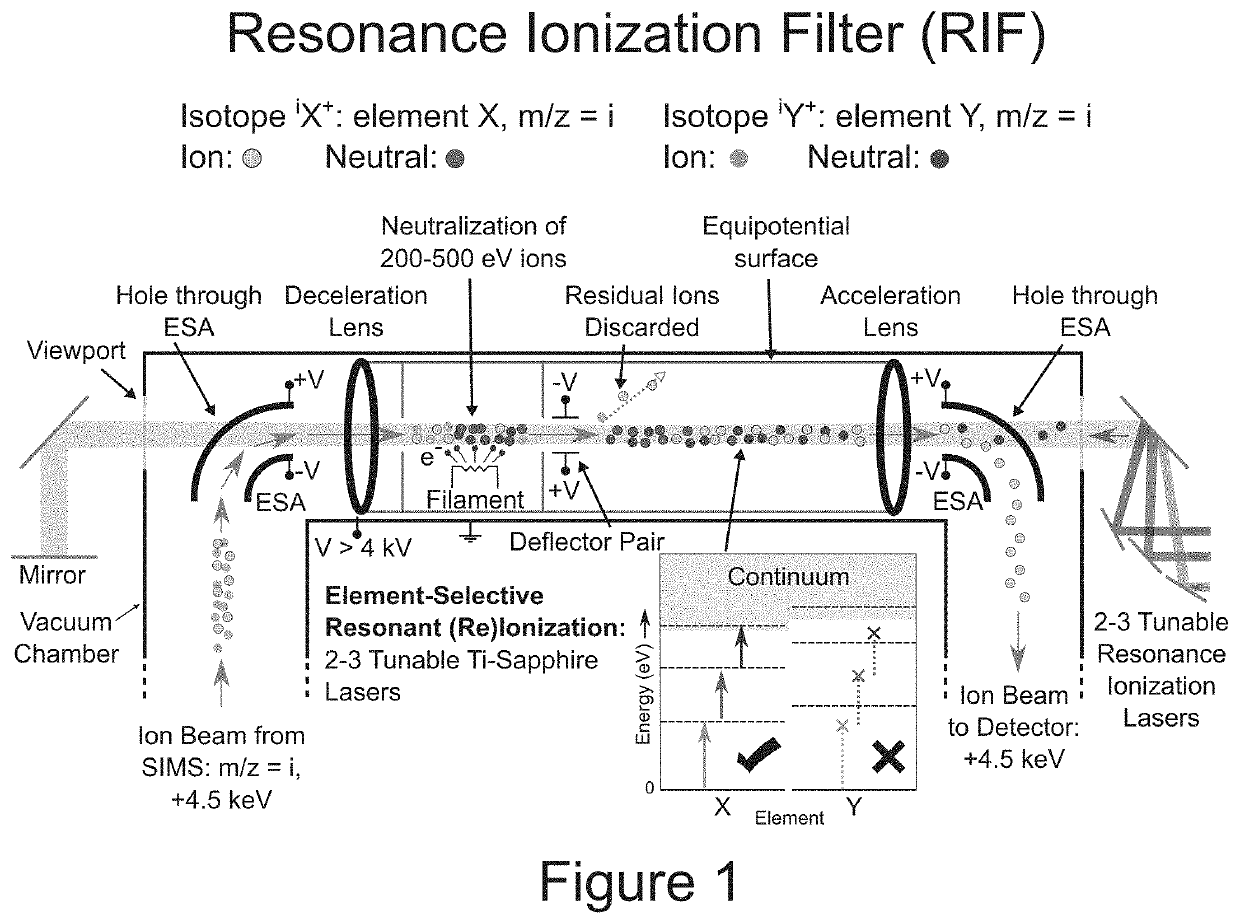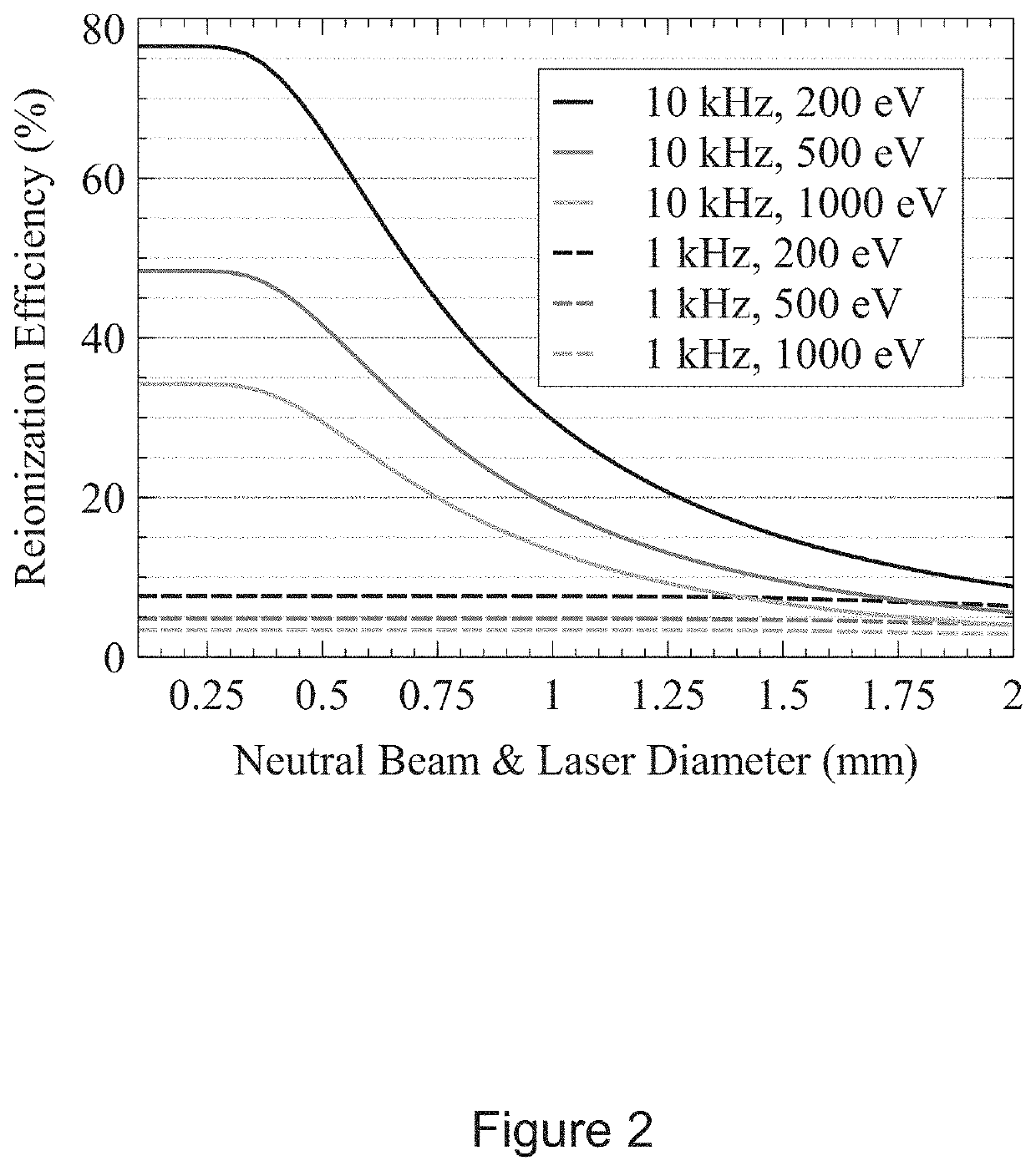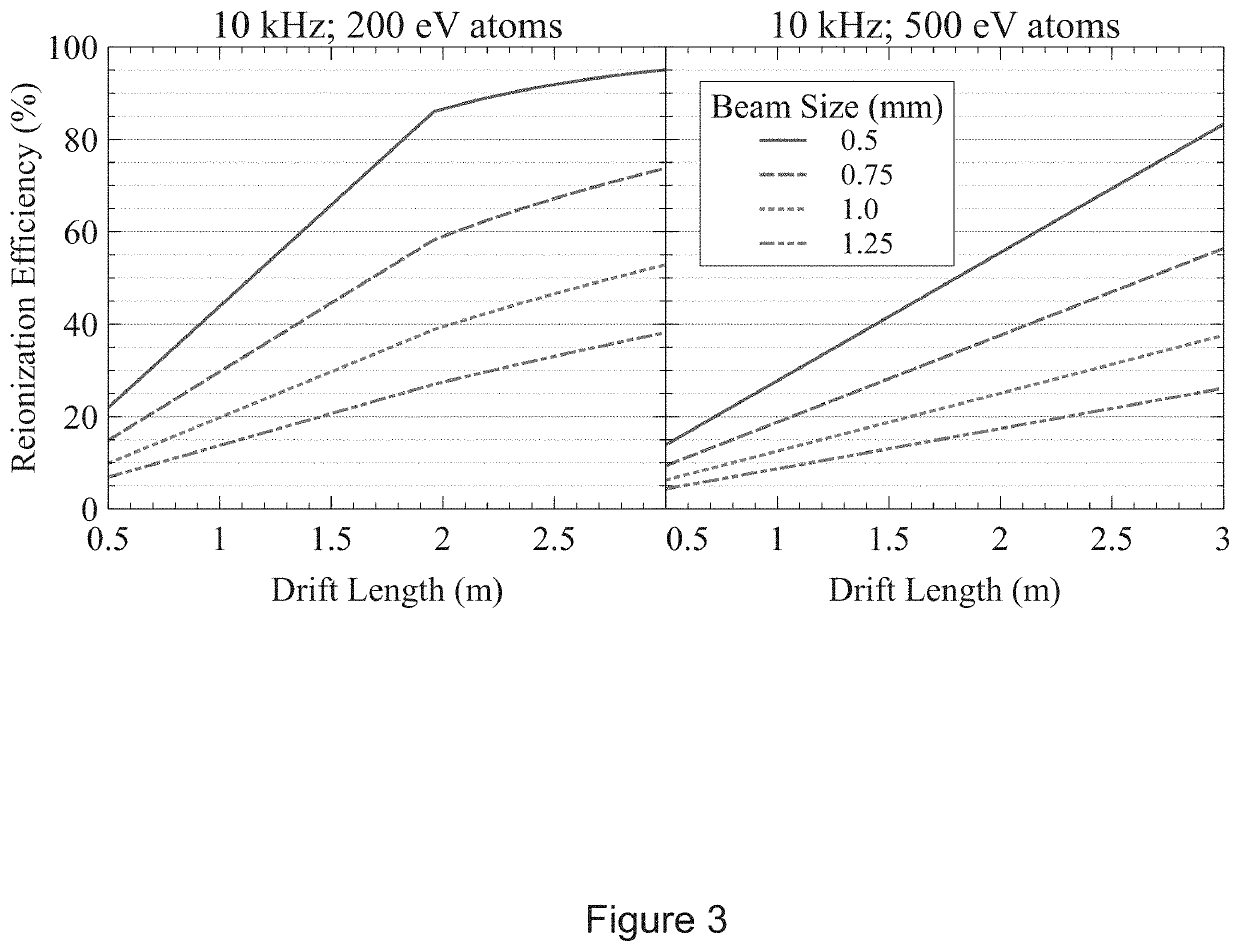Resonance ionization filter for secondary ion and accelerator mass spectrometry
a secondary ion and accelerator mass spectrometry technology, applied in the field of resonance ionization filter for secondary ion and accelerator mass spectrometry, can solve the problems of loss of the petrologic context of the sample, signal undetectable or highly imprecise, and no alternative to this technique, so as to reduce saturation irradiance, lower velocities, and higher residence times
- Summary
- Abstract
- Description
- Claims
- Application Information
AI Technical Summary
Benefits of technology
Problems solved by technology
Method used
Image
Examples
example 1
[0026]The RIF will incorporate four processes that in combination remove nuclear isobars from SIMS-like ion beams—deceleration, neutralization, resonant reionization, and re-acceleration—prior to ion detection.
[0027]FIG. 1 shows a schematic of the RIF.
[0028]Neutralization of the SIMS ion beam is performed using an electron source (e.g., W filament or plasma) or a gas cell.
[0029]Following the neutralizer, a set of deflector plates will be used to deflect any non-neutralized beam fraction into a detector for a measure of neutralization efficiency and to ensure that ions reentering the NAUTILUS beamline are only those that have been resonantly reionized.
[0030]The lasers for a resonance ionization system are pulsed at a specific repetition rate, while the ion signal from the dynamic SIMS is continuous.
[0031]Deceleration of the 4.5 keV SIMS ions down to a few hundred eV is therefore required to maximize the flight time of the ions in the RIF and increase the interaction probability with ...
example 2
[0042]We estimate the efficiency of the system we designed for the NAUTILUS (based on equations 1-5) to be up to 80% based upon the types of lasers available and calculations of the ion beam profile from the SIMS (i.e. a loss of only 20% of the ions of interest).
[0043]Ion optical models of the SIMS ion beam using SIMION were fed into the equations below (e.g., beam size, energy, dispersion, etc.). We calculated the efficiency of the reionization component of the RIF by determining the residence time of the neutrals in the drift tube (Eq. 1), each laser's irradiance (power density) (Eq. 2), the number of laser pulses per neutral in the drift tube (Eq. 3), the ionization probability (Eq. 4), and the overall efficiency (Eq. 5). Note, units have been stripped from the following equations for clarity. For all equations: L=drift length, V=ion / neutral energy, M=atom mass, p=average laser power, f=laser frequency, w=laser pulse width, s=laser beam size, t=residence time of atoms overlapping...
example 3
[0045]FIG. 2 shows the effects of the neutral beam and laser diameters relative to the reionization efficiency of the RIF for a mass 100 amu atom over a 1.5 m drift length with a saturation irradiance of 2 MW / cm2. The transit time of the atom, and therefore the efficiency, depends upon the decelerated ion energy, the drift length, and the atom mass (see different curves for each laser frequency).
[0046]FIG. 2 also shows the dramatically different sensitivity to neutral beam size between the two laser frequencies. This arises from the difference in irradiance between the two lasers: 0.25 MW / cm2 for the 10 kHz system and 3.61 MW / cm2 for the 1 kHz.
[0047]The 10 kHz system experiences a significant efficiency boost with smaller neutral beam diameters due to its lower irradiance, though this effect saturates below 0.4 mm.
[0048]In contrast, the 1 kHz system is hardly influenced by the neutral beam diameter because its irradiance is already high, but it is limited by a low repetition rate, w...
PUM
 Login to View More
Login to View More Abstract
Description
Claims
Application Information
 Login to View More
Login to View More - R&D
- Intellectual Property
- Life Sciences
- Materials
- Tech Scout
- Unparalleled Data Quality
- Higher Quality Content
- 60% Fewer Hallucinations
Browse by: Latest US Patents, China's latest patents, Technical Efficacy Thesaurus, Application Domain, Technology Topic, Popular Technical Reports.
© 2025 PatSnap. All rights reserved.Legal|Privacy policy|Modern Slavery Act Transparency Statement|Sitemap|About US| Contact US: help@patsnap.com



